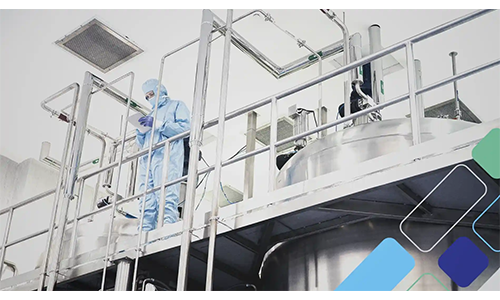You probably know about the language of love, but do you know about the language of safety? More importantly, do you know how to speak it? If not, your safety program may be falling short—and that could put employees at risk.
Safety professionals face many challenges, but one of the biggest is that they speak to so many different stakeholders, all of whom have different priorities. People in finance want to talk about dollars and cents. People on the frontline want to know how this protocol, tool or change will make their job easier. People in management want to know how productive and efficient their operations are, especially compared to the competition.
It’s a juggling act, acknowledges Steve Hughes, a senior regional safety manager for Uline, a North American family-owned-and-operated distributor of shipping supplies. EHS Today caught up with Hughes, who will be sharing his lessons learned for tailoring safety messages to the appropriate audience for maximum understanding at the Safety Leadership Conference, which will be held September 18-20 in Orlando, Florida.
More information about the conference, including registration, can be found at www.safetyleadershipconference.com. Below is a preview of what to expect from Hughes’ presentation.
EHS Today: What are the many languages of safety?
Hughes: English, Mandarin, Spanish and French are all different languages that people recognize and work to become fluent in. A variety of other languages are spoken every day in our business, but if we’re not fluent or deaf to their existence, our jobs are made more difficult.
For safety, and many aspects of business, how messaging is consumed will vary based on an individual’s motivators. Examples of languages include:
- the “bottom line” finance professional,
- a “return on investment” decision-maker,
- the operations manager who needs to know the “impact to getting things done,”
- care managers who ask what’s the effect on “quality of life,”
- a leader who needs to know about “brand impact” and
- and those who want to know “how we benchmark against others.”
How can safety professionals become fluent in these different languages?
To increase our effectiveness of meaningful, and impactful conversations, we first need to identify what makes our target audience respond. If we deliver a message and hear crickets, get blank stares, have no engagement or heads are down, maybe we missed the mark.
Once we’ve recognized that we may have an issue, the sleuth work must begin. Some questions or follow-ups to consider include: Have I had successful messaging with this group in the past? What has changed? What is the same? Have we had any changes in the organizational philosophy that may be impacting decision-making? If so, how can I change my messaging to align with the new philosophy?
In order to increase our fluency, we must be able to craft the messaging and say the same thing in different ways. A simple hypothetical example is a proposal to switch to an auto-retractable knife from a box cutter. This single change can lead to a substantial reduction in laceration recordable injuries. Here are four different ways to craft our message to meet the needs of the audience.
For the employees using it: “Less chance of a knife cut and less chance there will be an impact to you not being able to do what you love outside of work.”
For the finance professional: “I’ll need to spend $1,000 up front, but with a 50% reduction in laceration recordable injuries, our money will be recouped in six months.”
For the operations manager: “We had 10 laceration recordables last year, each resulting in 14 restricted days. With a 50% reduction by switching to this tool, we’ll gain 70 days back into production.”
For the benchmark leader: “Companies A, B and C switched, and they saw a 50% reduction in laceration recordable injuries.”
Why is tailoring the message important for safety professionals?
Motivation will vary for each individual decision-maker. If we lack engagement and interaction, we risk not being able to effectively lead the safety program.
How does effective communication help safety professionals be effective leaders?
When we share common goals or motivators, we are likely to develop a better partnership. For our employees, having them know and understand that we are inclusive in the decision-making and vetting process and looking to include their motivations leads to the best possible environment for achieving desired results.
Can you share some examples of how effective communication improved safety?
The one item I’ve been most proud of is running “Why I Work Safe” campaigns. The premise is basic, but its outcomes are immeasurable. The “Why I Work Safe” campaign was designed to better communicate and partner with employees. It’s voluntary but almost all participated. They would bring in a picture of why they worked safe or shared a story at the start of shift meetings about why they want to leave work safely. Employees shared about their families, activities they like to do, vacations they always look forward to and so on.
Two things happened. First, when talking about safety, a better connection was able to be made to include what “could” happen if a behavior was observed or a near-miss was documented—and how would this impact the activity you love to do. Second, a more inclusive engagement occurred when there was a realization that we’re all in this together, and we want to ensure we are leaving together safely.
Can you share some examples of how ineffective or tone-deaf communication hindered safety?
Early in my career, I was heavily into the alphabet soup of safety: RIR, LTIR, OSHA, TIR, etc. Most of my communication was spoken with these in mind. When talking to fellow safety professionals, it was a home run.
When talking to the other 95% of the audience, there was little engagement and not much buy-in. I had trouble getting things done. I realized two things as I grew in my career: First, numbers share a snapshot but you need more storytelling behind them. Second, You cannot assume everyone knows the ins and outs of a safety program like a safety professional would.
How can safety professionals learn to improve their communications and adapt their messaging in any and all capacities (e.g., written, spoken or recorded)?
We’ve all gone into a meeting or presentation thinking we’re going to get exactly what we want, and a parade will be thrown in our honor for such a great idea. Doesn’t always work out that way.
When reflecting on a setback or outcome you weren’t expecting, ask yourself: What worked? What didn’t? Why did I miss the mark? Can I gather feedback from those in attendance? You can put the pieces together and identify how you can approach it differently next time.
You mentioned that "Safety messaging is simple but complicated." Why is simplicity so important? Why is simplicity so challenging?
The premise for most safety professionals is we want to provide a safe work environment. There is no need to overcomplicate what we want to achieve, but how can we say that easily when talking about complex processes with numerous factors that impact our ability to create a safe work environment? The more we “add on” to our messaging, the more opportunity we have for items to be lost in translation.
What's one thing you hope attendees learn from your session at the Safety Leadership Conference?
I want attendees to understand that motivating people is unique to the individual, and we need to influence and lead with diverse approaches.





































































